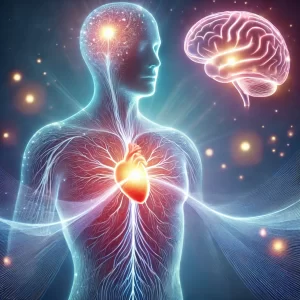
Finding Harmony: Understanding Brain and Heart Coherence
In the fast-paced world we live in, achieving a state of balance between our minds and bodies can feel like an elusive goal. Stress, anxiety, and the constant demands of life can easily throw us off balance, leading to a state of disharmony that affects not just our mental health, but our physical well-being as well. However, there is a powerful phenomenon known as brain and heart coherence that can help us regain and maintain this balance, leading to improved health, emotional stability, and a greater sense of peace. But what exactly is brain and heart coherence, and how can we achieve it?
Understanding Brain and Heart Coherence
At its core, brain and heart coherence refers to a state where the rhythms of the brain and heart are synchronized in a harmonious way. This harmonious relationship between the brain and heart is essential for optimal functioning of the body and mind. When we achieve this state, our entire system—both mental and physical—functions more efficiently, leading to improved emotional regulation, mental clarity, and overall health.
Brain Coherence: The Mind in Harmony
Brain coherence occurs when the various parts of the brain work together in a synchronized manner. In a coherent state, the brain’s neural pathways communicate effectively, leading to enhanced cognitive function, emotional regulation, and mental clarity. This synchronization can be disrupted by stress, anxiety, and negative emotions, which create chaotic brain wave patterns and lead to mental fatigue, confusion, and emotional instability.
Achieving brain coherence is often the result of practices like meditation, mindfulness, and specific breathing techniques. These practices help to calm the mind, reduce stress, and allow the brain’s different regions to work together more effectively. When our brains are coherent, we experience a state of mental flow, where thoughts are clear, focused, and aligned.
Heart Coherence: The Rhythm of Well-Being
Just as the brain has its rhythms, so does the heart. Heart coherence refers to a stable, balanced rhythm of the heart, often measured through Heart Rate Variability (HRV). HRV is a measure of the variation in time between each heartbeat, and it is an important indicator of how well our bodies can adapt to stress and maintain balance.
When the heart is in a coherent state, it sends positive signals to the brain, promoting a sense of emotional stability, mental clarity, and overall well-being. Positive emotions like gratitude, love, and appreciation naturally lead to heart coherence. In contrast, negative emotions such as anger, frustration, or anxiety can lead to incoherence, causing irregular heart rhythms and signaling distress to the brain.
The Synergy: Brain and Heart Coherence
When both the brain and heart are in a coherent state, they work together in harmony, creating a powerful synergy that enhances overall well-being. This state of coherence between the brain and heart leads to a number of benefits, including:
Reduced Stress: Coherent heart rhythms and brain waves help to lower stress levels, promoting a state of calm and relaxation.
Improved Mental Clarity**: When the brain is coherent, thoughts are clearer, decision-making is enhanced, and mental fog is reduced.
Emotional Stability: Heart coherence supports emotional resilience, helping you to navigate challenges with greater ease and balance.
Enhanced Physical Health: A coherent state improves physiological functioning, including better immune response, cardiovascular health, and overall vitality.
How to Achieve Brain and Heart Coherence
Achieving brain and heart coherence is not as difficult as it might seem. With regular practice, you can train your body and mind to enter this state more easily. Here are some techniques to help you get started:
1. Deep Breathing: One of the simplest and most effective ways to achieve coherence is through deep breathing. Slow, deep breaths help to calm the nervous system and promote a balanced rhythm between the heart and brain.
2. Focus on Positive Emotions: Emotions like gratitude, love, and appreciation naturally lead to heart coherence. By consciously focusing on these emotions, you can create a more harmonious state within yourself.
3. Meditation and Mindfulness: Regular meditation practices help to calm the mind, enhance brain coherence, and promote overall emotional balance. Mindfulness, the practice of being present in the moment, also supports coherence by reducing stress and promoting a state of calm.
4. Biofeedback Techniques: If you want to take it a step further, you can use biofeedback devices that measure Heart Rate Variability (HRV). These tools can help you monitor and train your ability to achieve heart coherence, providing real-time feedback on your progress.
Conclusion: Embrace the Power of Coherence
Brain and heart coherence offers a powerful path to holistic well-being, helping you to achieve a state of balance that benefits both your mental and physical health. By incorporating practices that promote coherence into your daily life, you can enhance your emotional resilience, improve mental clarity, and experience greater overall vitality.
In a world where stress and chaos can easily take over, finding coherence between your brain and heart is not just a luxury—it’s a necessity for living a healthy, balanced, and fulfilling life. Start with small steps, practice regularly, and soon you’ll find yourself more in tune with the natural rhythms of your body and mind, leading to a state of harmony that supports your well-being on every level.